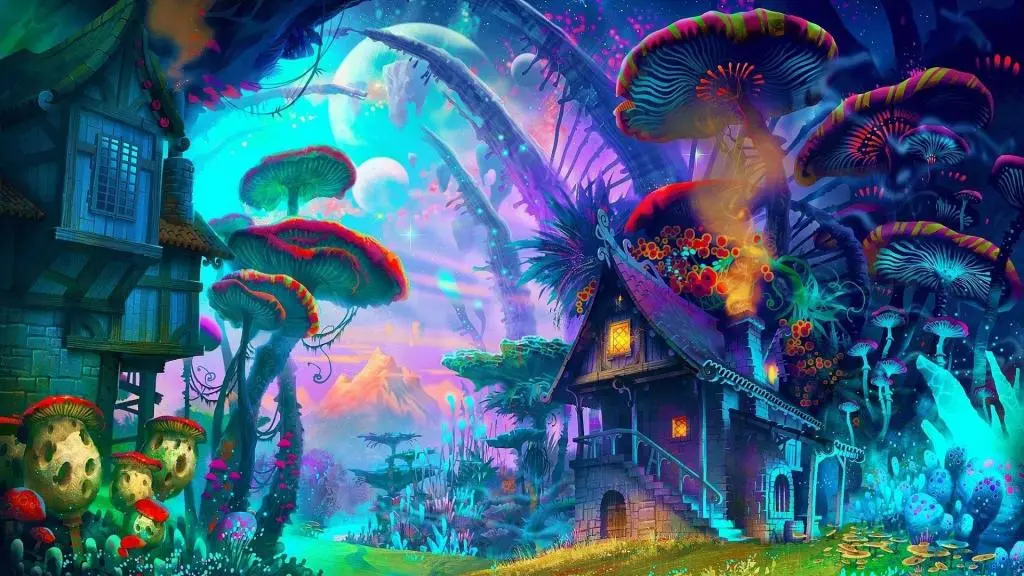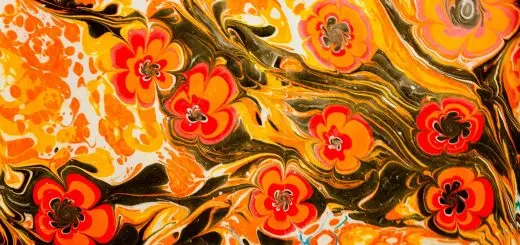Tracing Inspirational Symbols and Their Deep Significance

Looking for more amazing products? Check out our online store and explore our collection here! Happy shopping!
Before diving in, please note: This post is for informational purposes only. If you’d like to know more about how we approach topics, feel free to check out our friendly Disclaimer Page.
Hey there, amazing readers! 
We’re committed to delivering quality posts, and your support (even just sticking around despite the ads) means everything to us. So, bear with us, and thanks for helping us keep the good vibes rolling. Now, on to the fun stuff!
TRANSLATE BUTTON AT THE END OF THE ARTICLE
Exploring Inspirational Symbols
Inspirational symbols have been a part of human history for centuries, serving as sources of motivation, guidance, and hope.
These symbols often carry deep significance and can evoke powerful emotions within individuals.
Whether they stem from cultural traditions, religious beliefs, or personal experiences, inspirational symbols have the ability to resonate with people on a profound level.
Exploring these symbols allows us to delve into the rich tapestry of human expression and understanding.
From ancient hieroglyphics to modern-day emojis, symbols have played a vital role in communication and representation.
They can convey complex ideas and emotions in a concise and impactful manner, transcending language barriers and cultural divides.
By examining the origins and meanings of inspirational symbols, we gain insight into the collective consciousness of humanity and the universal themes that connect us all.
These symbols can serve as reminders of our shared experiences, values, and aspirations, uniting us in our common journey towards growth and enlightenment.
Understanding Symbolism in Culture
Symbolism is deeply ingrained in cultural practices and beliefs, shaping the way we perceive the world around us.
From the use of colors in traditional ceremonies to the significance of animals in folklore, cultures around the world employ symbols to convey meaning and express their unique identities.
In many societies, specific symbols hold particular importance and are often used to represent key concepts such as love, wisdom, strength, or protection.
These symbols can be found in art, architecture, clothing, and even everyday objects, serving as visual reminders of cultural heritage and values.
Understanding the symbolism in culture allows us to appreciate the diversity and richness of human expression.
By immersing ourselves in different traditions and customs, we can gain a deeper understanding of the beliefs and practices that shape the lives of people from various backgrounds.
This exploration fosters empathy, respect, and a sense of interconnectedness with others.
Significance of Common Symbols
While some symbols may be specific to certain cultures or belief systems, others are universally recognized and hold significance across different contexts.
Common symbols such as the heart, the tree of life, or the dove often represent timeless themes like love, growth, peace, and resilience.
These symbols have stood the test of time and continue to resonate with people from all walks of life.
They serve as powerful reminders of the essential values that unite us as human beings and inspire us to strive for a better world.
Whether carved into ancient ruins or displayed in contemporary art, common symbols have a timeless quality that transcends generations and cultures.
Understanding the significance of these symbols allows us to tap into their universal appeal and harness their transformative power in our own lives.
By incorporating these symbols into our daily practices and rituals, we can draw strength, inspiration, and guidance from their enduring wisdom and beauty.
Tracing Symbols Through History
The history of symbols is a fascinating journey through time, reflecting the evolution of human thought, creativity, and spirituality.
From the earliest cave paintings to the intricate symbolism of medieval tapestries, symbols have served as markers of cultural identity, religious devotion, and artistic expression.
Tracing symbols through history provides us with valuable insights into the beliefs, values, and aspirations of past civilizations.
We can see how these symbols have been adapted, reinterpreted, and transformed over the centuries, reflecting the changing needs and perspectives of society.
By studying the historical context of symbols, we can gain a deeper appreciation for their enduring relevance and profound impact on human culture.
Whether used to convey myths, rituals, or social hierarchies, symbols have played a vital role in shaping the way we perceive the world and our place within it.
Symbols in Art and Literature
Art and literature have long been vehicles for exploring and expressing the symbolism of the human experience.
From the iconic imagery of religious paintings to the allegorical tales of classic literature, symbols are woven into the fabric of creative expression, adding layers of meaning and depth to our understanding of the world.
Explore the Path to Spirituality and Enlightenment – Start Here.
Artists and writers often use symbols to convey abstract concepts, emotions, and beliefs that transcend language and logic.
Through the use of color, form, and narrative, they invite viewers and readers to interpret and engage with the symbolic elements in their work, sparking contemplation and introspection.
Symbols in art and literature can function as mirrors that reflect our innermost thoughts and feelings, as well as windows that open up new perspectives and possibilities.
By analyzing these symbols in context, we can uncover hidden meanings, explore universal themes, and connect with the shared humanity that binds us all.
Religious Symbols and Their Meanings
Religious symbols are potent sources of inspiration, devotion, and reflection for believers around the world.
From the cross in Christianity to the lotus in Buddhism, these symbols embody sacred truths, spiritual ideals, and divine presence, serving as focal points for worship and contemplation.
Each religious tradition has its unique set of symbols, each carrying profound meanings and associations that deepen the practitioner’s connection to the divine.
These symbols often draw from the natural world, historical events, or mythical narratives, grounding the believer in a rich tapestry of spiritual wisdom and guidance.
Understanding the meanings of religious symbols can provide insights into the core beliefs, practices, and rituals of different faiths.
By studying these symbols, we can cultivate respect, empathy, and understanding for diverse religious traditions, fostering interfaith dialogue, and cooperation.
Symbolism in Daily Life
Symbols permeate every aspect of our daily lives, from the logos we wear to the emojis we use in text messages.
These symbols carry layers of meaning and associations that shape our perceptions, attitudes, and behaviors, often operating on a subconscious level to influence our thoughts and actions.
In the realm of advertising, symbols are strategically used to evoke emotions, create brand awareness, and influence consumer behavior.
From the golden arches of McDonald’s to the swoosh of Nike, logos serve as visual cues that trigger instant recognition and associations with specific values and qualities.
In personal interactions, symbols play a crucial role in communication, conveying subtle messages, emotions, and intentions that words alone may fail to express.
Whether through body language, gestures, or facial expressions, symbols enrich our social interactions and deepen our connections with others.
Impact of Symbols on Society
Symbols have a profound impact on society, shaping our collective consciousness, values, and identity.
They serve as potent tools for mobilizing people, rallying support for causes, and fostering unity and solidarity among diverse groups.
Political movements often use symbols to galvanize support, express dissent, and assert identity.
From flags and emblems to slogans and gestures, symbols can convey powerful messages that resonate with the masses, inspiring action and change.
In the realm of social justice, symbols are instrumental in raising awareness, promoting inclusivity, and challenging systemic injustices.
Campaigns like #BlackLivesMatter and #MeToo harness the power of symbols to spark conversations, ignite movements, and effect social change on a global scale.
Evolution of Symbolic Meanings
The meanings of symbols are ever-evolving, shaped by historical events, cultural shifts, and individual interpretations.
What may have been considered a symbol of strength or prosperity in one era could be reinterpreted as a sign of oppression or injustice in another.
As society progresses and values change, symbols take on new meanings and associations that reflect the evolving attitudes and beliefs of the times.
This fluidity allows symbols to remain relevant and impactful, adapting to the needs and sensibilities of each generation.
By examining the evolution of symbolic meanings, we can gain a deeper appreciation for the dynamic nature of human culture and society.
Symbols serve as mirrors that reflect our collective aspirations and concerns, providing us with insights into the past, present, and future of our shared journey.
Hidden Messages in Symbols
Symbols often contain hidden messages and cryptic meanings that require careful interpretation and analysis.
From the use of color symbolism in art to the placement of symbols in architecture, these hidden messages add layers of complexity and depth to our understanding of the world around us.
In some cases, symbols may be deliberately encoded with secret meanings or messages, serving as markers for clandestine societies, underground movements, or covert operations.
These hidden symbols can be found in art, literature, and even everyday objects, challenging us to look beyond the surface and uncover their concealed truths.
Unraveling the hidden messages in symbols allows us to engage with the world in a more nuanced and critical manner.
By deciphering the layers of meaning embedded in symbols, we can uncover hidden truths, challenge conventional wisdom, and expand our understanding of the complexities that underpin our reality.
Unraveling Symbolism in Nature
Nature is a rich source of symbolic meanings and metaphors that have inspired artists, poets, and philosophers for centuries.
From the resilience of the oak tree to the beauty of a blooming flower, natural symbols evoke a sense of wonder, reverence, and interconnectedness with the world around us.
The symbolism in nature often reflects universal themes of growth, renewal, and transformation, mirroring the cycles of life and the rhythms of the natural world.
Animals, plants, and landscapes serve as potent symbols that resonate with our deepest instincts, emotions, and aspirations.
By unraveling the symbolism in nature, we can develop a deeper appreciation for the beauty and complexity of the natural world.
Symbols found in the environment can serve as reminders of our place within the web of life, inspiring us to cultivate a harmonious relationship with the earth and all its inhabitants.
Personal Connections to Symbols
Each individual has their unique set of symbols that hold personal significance and meaning.
Whether it’s a cherished heirloom, a favorite piece of jewelry, or a recurring dream symbol, these personal symbols can serve as touchstones that anchor us in times of uncertainty, change, and transition.
Our personal connections to symbols often stem from deep-seated emotions, memories, and experiences that shape our identities and beliefs.
These symbols may carry hidden messages, reminders of past lessons, or aspirations for the future, guiding us on our life’s journey and offering comfort and solace in times of need.
By exploring our personal connections to symbols, we can gain insight into our innermost desires, fears, and hopes.
These symbols can act as mirrors that reflect our inner world, helping us to navigate life’s complexities and challenges with grace, resilience, and self-awareness.
Conclusion
Inspirational symbols are woven into the fabric of human culture, serving as powerful conduits of meaning, reflection, and connection.
From ancient hieroglyphics to modern-day emojis, symbols have played a vital role in shaping the way we communicate, express ourselves, and relate to the world around us.
By exploring the origins, meanings, and significance of symbols, we can unlock hidden truths, deepen our understanding of human culture, and forge connections with others across time and space.
Symbols hold the power to inspire, unify, and transform, offering us glimpses into the collective wisdom and creativity of humanity.
As we navigate the complexities of life, symbols can serve as beacons of light, guiding us towards inner growth, self-discovery, and spiritual awakening.
By embracing the symbolism that surrounds us, we open ourselves to a world of endless possibilities, insights, and connections that enrich our lives and expand our horizons.

The Enlightenment Journey is a remarkable collection of writings authored by a distinguished group of experts in the fields of spirituality, new age, and esoteric knowledge.
This anthology features a diverse assembly of well-experienced authors who bring their profound insights and credible perspectives to the forefront.
Each contributor possesses a wealth of knowledge and wisdom, making them authorities in their respective domains.
Together, they offer readers a transformative journey into the realms of spiritual growth, self-discovery, and esoteric enlightenment.
The Enlightenment Journey is a testament to the collective expertise of these luminaries, providing readers with a rich tapestry of ideas and information to illuminate their spiritual path.
Our Diverse Expertise
While our primary focus is on spirituality and esotericism, we are equally passionate about exploring a wide range of other topics and niches 

To ensure we provide the most accurate and valuable insights, we collaborate with trusted experts in their respective domains 
Our blog originally focused on spirituality and metaphysics, but we’ve since expanded to cover a wide range of niches. Don’t worry—we continue to publish a lot of articles on spirituality! Frequently visit our blog to explore our diverse content and stay tuned for more insightful reads.
Hey there, amazing reader! 
Check out our store here and take a peek at some of our featured products below! Thanks for being awesome!













